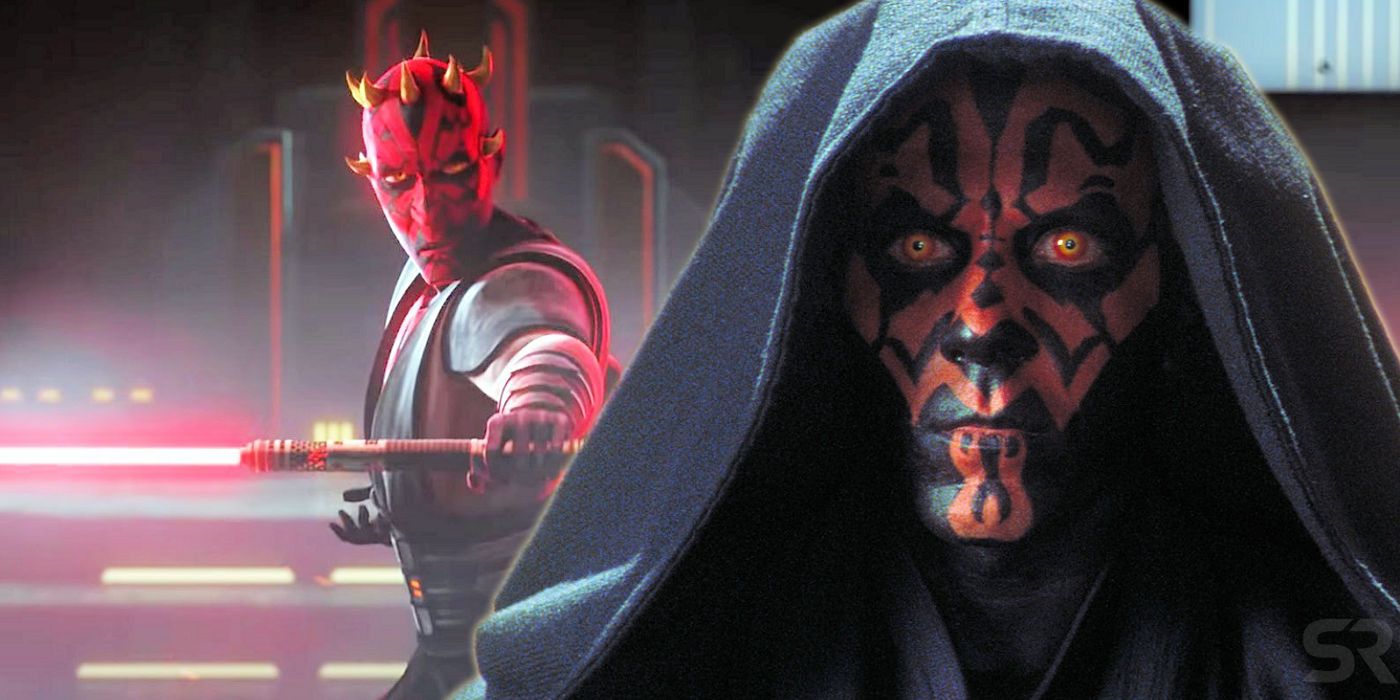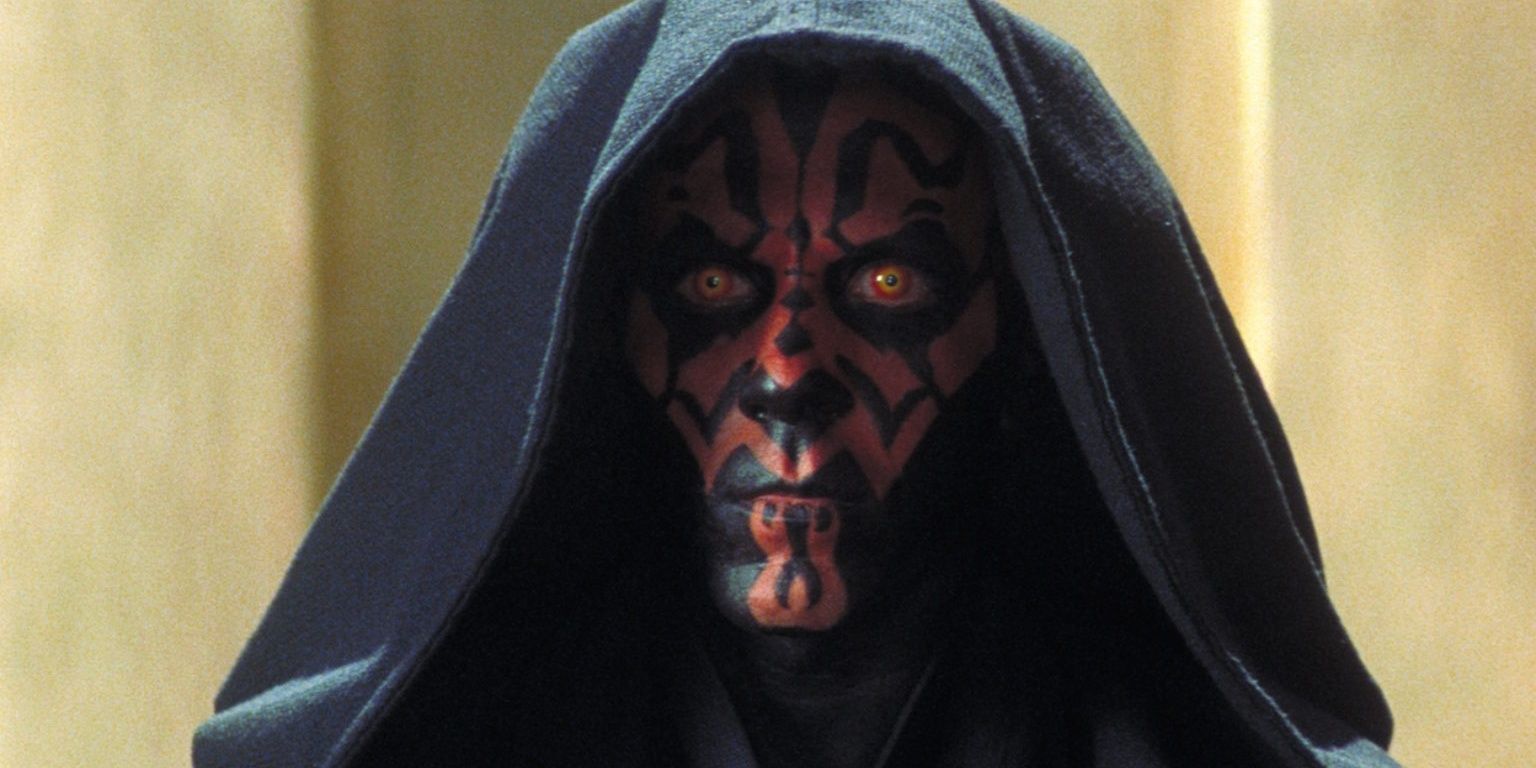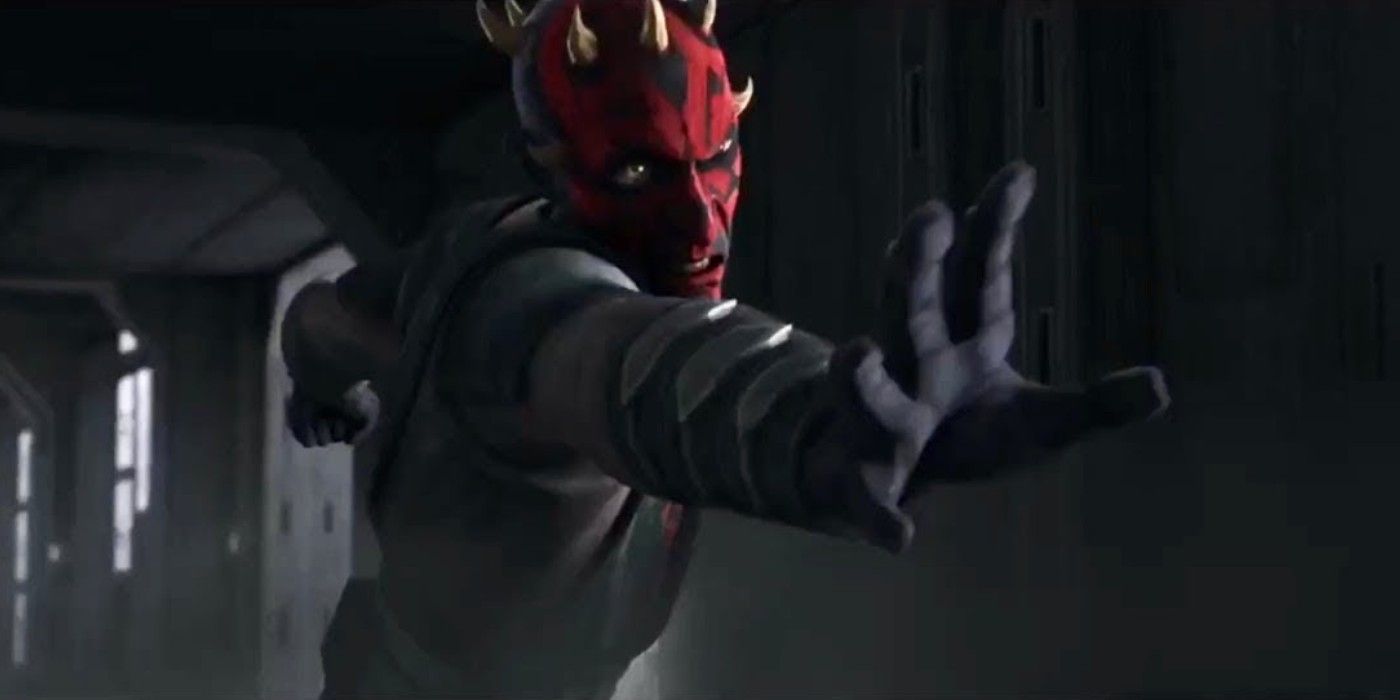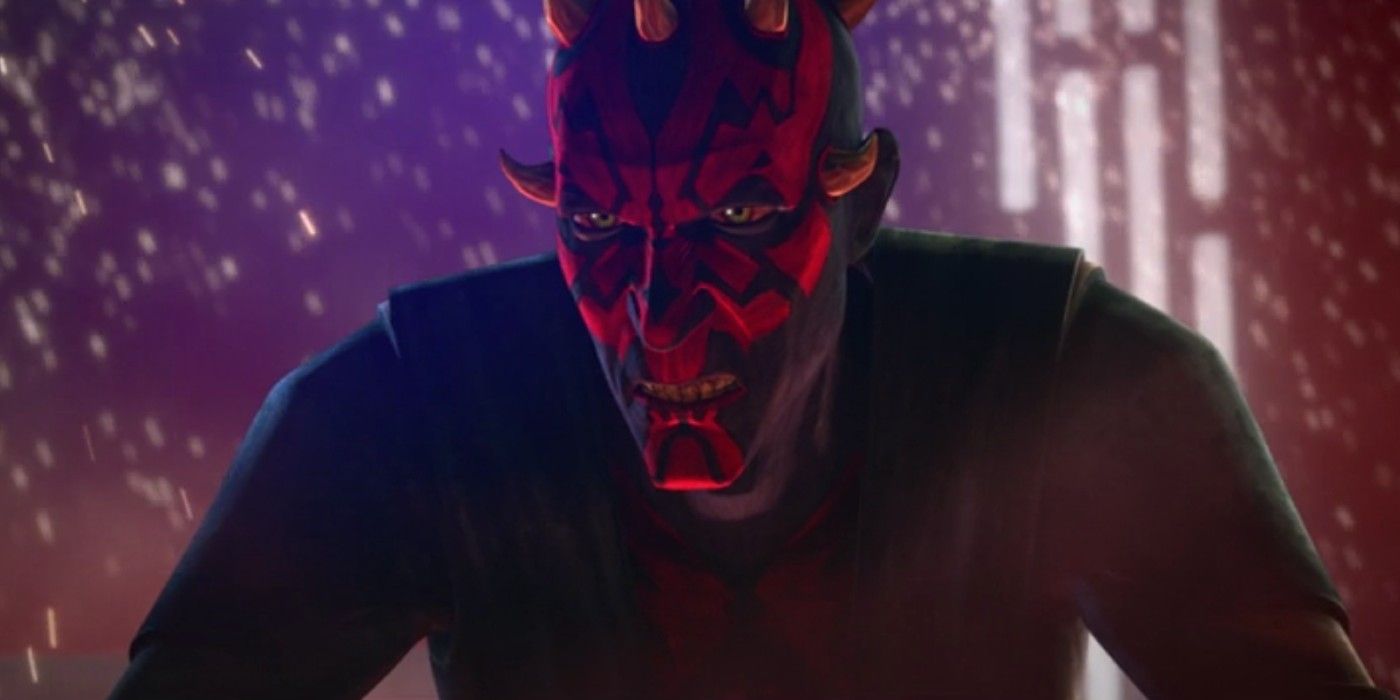Star Wars: The Clone Wars corrected George Lucas' Darth Maul mistake in Star Wars: Episode I - The Phantom Menace. In 1999, after nearly 20 years of (mostly) patience, moviegoers were at last able to gather to watch a new Star Wars film on the big screen.
The film was panned by critics, but it was frankly a phenomenal success. It grossed $924 million worldwide (almost $1.5 billion when adjusted for inflation), against a budget of $115 million (just shy of $180 million adjusted for inflation). Star Wars: Episode I - The Phantom Menace was one of the 'leggiest' blockbusters of the era, conquering the summer with an ease Palpatine would have envied. Since then, like all of the prequels, The Phantom Menace has gradually been reappraised and accepted by the fandom - even valued and loved.
For all that's the case, though, George Lucas did make one massive mistake with Star Wars: Episode I - The Phantom Menace, specifically with how Darth Maul was used in the film. Fortunately, he was later given an opportunity to fix that mistake with The Clone Wars animated series.
The Phantom Menace Wasted Darth Maul
Lucasfilm knew they were on to a winner with Darth Maul. His monstrous visage appeared prominently in the marketing for Star Wars: Episode I - The Phantom Menace, appearing on almost all of the posters and in the film's trailer. "At last we will reveal ourselves to the Jedi," he seethed, in lines that burned themselves into the mind of viewers worldwide. "At last we will have revenge." George Lucas had always recognized the potential for Star Wars merchandise, and shelves were packed with models inspired by the evocative Darth Maul.
It's not hard to see why Darth Maul was regarded with such interest and enthusiasm; he cuts an impressive figure, with a stunning make-up design that makes the Sith Apprentice look like a demon come to life. Stunt actor Ray Park innovated a stunning new fighting technique that had never been seen before in Star Wars, wielding the double-bladed lightsaber in carefully choreographed duels with Ewan McGregor's Obi-Wan Kenobi and Liam Neeson's Qui-Gon Jinn. McGregor and Park practiced with such enthusiasm they kept bending their practice swords out of shape like coat-hangers during rehearsals. It all resulted in action scenes with a brutal, visceral edge that is thrilling to watch. He had the potential to be the prequel trilogy's version of Darth Vader, an iconic villain who would never be forgotten.
Unfortunately, it was not meant to be. As far as Lucas was concerned, Darth Maul was just a pawn on the board, used by Palpatine for an explicit purpose. His real role in the story was simply to kill Qui-Gon Jinn, denying young Anakin Skywalker the father figure he so desperately needed. With that mission completed, he was killed off in an unceremonious fashion. The extent of Lucas' disinterest is perhaps indicated by the fact he never even bothered to flesh out the fight scenes featuring Darth Maul in the script, simply writing "A vicious lightsaber fight ensues." Worse still, the Sith Apprentice was even denied a character arc of his own. When he was finally cut down by Obi-Wan Kenobi, he was just as much a blank slate in character terms as he had been when he first appeared on the screen. It was a shocking waste of potential.
Clone Wars Gave Maul A Proper Story
When George Lucas returned to the prequel trilogy for Star Wars: The Clone Wars, he took the controversial decision to correct his greatest mistake and bring Darth Maul back from the dead. Palpatine's discarded pawn returned to the board as a player, increasingly aware he had been betrayed, and seeking revenge upon both Darth Sidious and Obi-Wan Kenobi. Darth Maul essentially became the greatest disruption in the would-be Emperor's schemes, and he came within a hair's breadth of sabotaging them beyond repair. Absent the presence of Darth Maul, The Clone Wars would have been a simple back-and-forth between the Republic and the Separatists, but the presence of this third party - with an agenda all of his own - added a fantastic layer of complexity to the series.
It's tempting to see Star Wars: The Clone Wars as something of a side-story, irrelevant to the main narrative shown in the prequel trilogy. But George Lucas and Dave Filoni didn't see it that way; they felt they were adding nuance to the galaxy, helping to explain decisions Palpatine would make later in the day. As Maul voice-actor Sam Witwer explained in an interview with Hollywood.com:
"What’s really fun to note is that Darth Maul, having survived his grievous injuries, plants the seed in Palpatine’s head that maybe you don’t give up on these guys so quickly. If they’re dead, or you think they’ve been killed, maybe they’re not. Maybe they can survive, maybe they can amount to something. That’s something we get to see coming up, Sidious realizing that. That ultimately leads to Darth Vader."
Maul's arc would continue, and ultimately come to a conclusion - in Star Wars Rebels. In the end, Maul faced Obi-Wan Kenobi one last time; this intense showdown ended with Obi-Wan cradling the dying Darth Maul in his arms, with Maul deducing Kenobi was protecting the Chosen One. "He will avenge us," Maul declared with his final breath, foreseeing the ultimate defeat of the Sith Lord who betrayed him, again binding the former Sith Apprentice into the overarching saga.
Clone Wars Made Maul Into A Great Star Wars Character
Ultimately, Star Wars: The Clone Wars has successfully redeemed Darth Maul, turning him into a complex character in his own right. George Lucas originally treated Maul as a flat, one-dimensional villain, who existed only to serve his role in the narrative before being killed off. Through The Clone Wars, though, he was transformed into a man fueled by vengeance on those he believed had wronged him. The dynamic between Darth Maul and Obi-Wan Kenobi was particularly fascinating, because the two seemed locked in an almost eternal dance of death, with Maul attacking Kenobi with relentless abandon. Lucas used this as an opportunity to shine a new light on Obi-Wan's own character, with Maul responsible for the death of the woman Kenobi loved, Duchess Satine of Mandalore.
Given this ever-escalating vendetta, Dave Filoni felt there was only one way Maul's story could end - courtesy of Obi-Wan Kenobi. "It's not just about bringing Maul back," he pointed out, "but you also look at how it affects the character of Obi-Wan... It's a character arc for Maul and a character arc for Obi-Wan." That final battle was a tragic one, as two older men faced each other one last time, both victims of Darth Sidious, both shadows of their former selves. Thanks to Star Wars: The Clone Wars, a villain treated so dismissively in Star Wars: Episode I - The Phantom Menace had been transformed into a character whose final fate was powerful, emotional, and deeply evocative.




